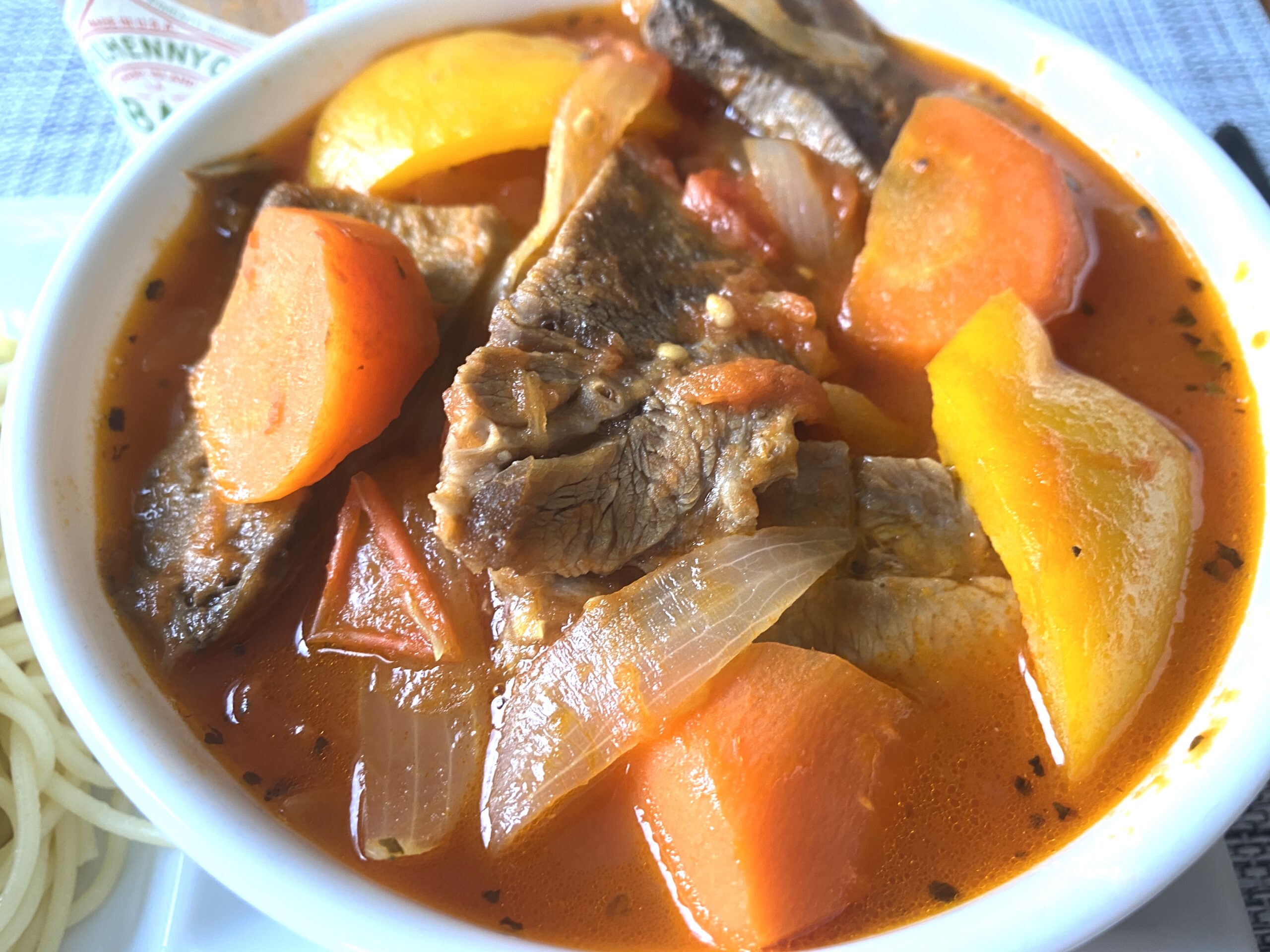Put 1 tbsp of oil into the wok on low heat.
Fry two sides of the beef tongue until the aroma flavours come out
Add a little bit of black pepper, cooking wine and serve on the dish first.
You don’t have to clean up the wok. On medium heat, place the spaghetti in the wok. Put a little bit of salt and allow the remaining oils to absorb into the spaghetti. Then, serve the other dish.
Add onions and pan fry until the aroma comes out. Add carrot , yellow pepper, tomato paste and ketchup and fry evenly. Pour the chicken soup and half a cup of water. After bringing it to a boil, add beef tongue and basil, fry evenly and put the lid on.
Cook for 10 minutes.
Serve the beef tongue and spaghetti separately on the dish either putting the beef tongue or spaghetti first on the dish.
Another way to serve this dish is to put the spaghetti first and tomato beef tongue on the top. Sprinkle cheese on top and bake in the oven at 400 degrees until the cheese melts (make sure to do this right away when the dish is still hot).
